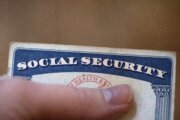In the aftermath of many high-profile data breaches, Americans are more concerned than ever about the security of their credit cards. Credit cards are a frequent target of criminal hackers, and as payment technology evolves, it’s important that you know how to protect your financial data.
How Your Credit Card Can Be Compromised
When you make a purchase, your credit card information must pass through multiple hands, including the merchant, the merchant’s bank, the cardholder’s bank and the credit card network, such as Visa or Mastercard. At each step of the way, your account information has the potential to be stolen, as no system can ever be perfectly secure. For example, a merchant’s systems might get hacked, such as when retail giant Target was the victim of a 2013 breach that affected 41 million payment card accounts. Or, the payment processor could be at fault, such as when Heartland Payment Systems was hacked in 2008, exposing account information for 130 million credit and debit cards.
[Read: Best Low-Interest Credit Cards of 2017.]
But often, fraud starts with the cardholder. For example, your credit card can be physically stolen, or your account numbers can be copied and used for telephone or internet purchases where a physical card is not required. Data from cards that use tap-to-pay technology, which transmits information wirelessly using radio-frequency identification, can also be stolen by criminals standing near you.
Jeremy Hajek, an industry associate professor of information technology and management at the Illinois Institute of Technology in Chicago, says criminals have been known to walk around with card scanners, extracting information wirelessly in public places. This makes physical credit cards vulnerable to theft, even if they never leave your wallet, but there are options for more secure wireless payments. Hajek says smartphone wireless payment systems are much more secure because these transactions require a personal identification number before approval.
What You Can Do to Protect Yourself From Credit Card Fraud
Hajek recommends several practical suggestions that can help credit card users prevent fraud.
Keep things separate: “In the security world, we segregate, we don’t give everyone a master key,” says Hajek. You should use separate cards for different kinds of purchases. For example, he says, you might use one card for online transactions and other purchases that might have a higher risk of fraud. That way, you can more easily identify any problem. He also says never keep all your credit cards in one place when you’re traveling. Leave some of your credit cards in your hotel room when you go out to ensure that they all won’t be stolen at any time.
[Read: The Best Rewards Credit Cards of 2017.]
Reconsider your debit cards: Some of the most important ways to protect yourself against credit card fraud are also the easiest. For example, Hajek advises that consumers avoid debit cards , as any money stolen from those accounts immediately affects your balance. By contrast, credit card users can dispute fraudulent charges before they even need to make a payment.
Exercise caution while shopping online: Make sure the website uses encryption, which you can verify by checking that the address begins with HTTPS instead of HTTP. You should also avoid inputting your credit card information into a computer used by the public, such as those in your hotel’s business center or at an internet cafe.
Consider using an RFID-blocking wallet: In addition, there are special wallets designed to block RFID signals, which can protect against data thieves. However, keep in mind that those are only necessary if you have a credit card that allows tap-to-pay transactions, not those with just an embedded smart chip.
Be wary when you give your card to a merchant: You should also be cautious when handing your credit card to a merchant, as your card information can be stolen by the cashier. Another potential way to steal your account information is with a skimmer, which is a credit card reader that can be attached to gas pumps or ATMs to gather card information.
Yet, Hajek says your payment account information is most vulnerable once it’s in the hands of retailers, payment processors and other companies necessary to complete the transaction. When your account information is compromised after your transaction is completed, there’s little you can do, but you can still identify and report fraudulent charges.
[Read: Best No Annual Fee Credit Cards.]
Therefore, you should carefully scan your monthly credit card statements to look for fraudulent charges. The Fair Credit Billing Act limits your liability to $50 in the event of a fraudulent transaction, but Visa, Mastercard, American Express and Discover waive that amount by offering $0 fraud liability guarantees. However, most fraud liability guarantees require credit card users to identify and report fraudulent transactions to their card issuer within a certain period of time, such as 60 days from the statement with a fraudulent charge.
Bottom Line
Credit card fraud can be a frightening prospect, but there are several ways to protect yourself. By taking basic steps to safeguard your account information and looking out for suspicious charges on your statement, you can reduce the chance you’ll suffer from credit card fraud.
More from U.S. News
How to Get a Credit Card Without a Social Security Number
Closing a Credit Card the Right Way
Best Travel Rewards Credit Cards of 2017
How to Protect Yourself from Credit Card Fraud originally appeared on usnews.com







